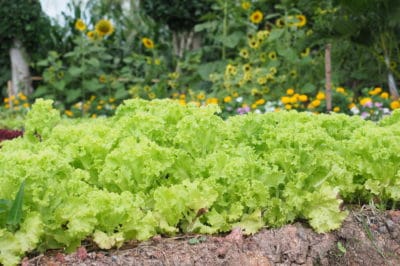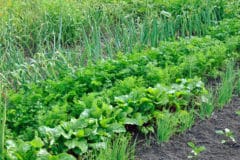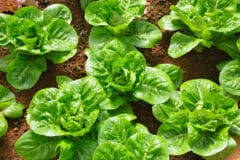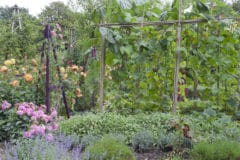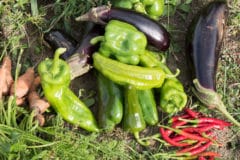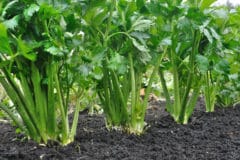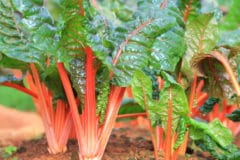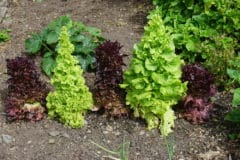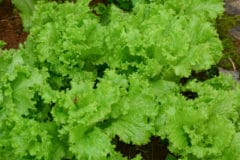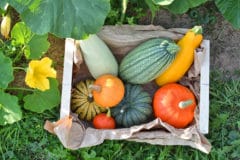Shade
Because lettuce is sensitive to too much sun and heat, giving it a bit of shade is beneficial. You may plant lettuce during the cool days of spring, but before long the summer heat creeps in sending your lettuce crop to bolt. Planting tall companions amidst your lettuce will allow light in while the plants are young and small, and then protect them later from the harsher weather. Common shade companions are:
- Tomatoes
- Broccoli
- Kohlrabi
- Sunflowers
- Corn
Pests
One of the biggest reasons for gardeners to practice companion planting is pest control. A balanced ecosystem is what your after, and the more diversity in the garden the more balanced the system is. An insect is less likely to travel to all of your plants if they are separated by something it doesn’t care for. Similarly, by attracted predatory insects with certain companions, you can keep pest populations down.
The best companion plants for lettuce that either deter pests or attract predators are aromatics. Just about anything in the mint family will serve this purpose. Mints are known to repel the number one pest of lettuce plants, slugs, and snails. Companion options include:
- Mints (Thyme, Sage, Lavender, Lemon Balm etc.)
- Dill and Fennel
- Chives and Garlic
- Marigolds
- Coriander
Nutrients
Many plants are complimentary because they don’t compete for nutrients in the soil. Some plants even benefit each other. Members of the pea and bean families fix nitrogen from the air into the soil in plant available form. For this reason, farmers often grow them between crops to enrich the fields. Radishes will stay softer in the field when planted near lettuce, making them palatable for a longer time.
Keep in mind that your companions should also be companions. For example, radishes are excellent companions to lettuce and so is hyssop. However, hyssop and radishes are not good companions for each other so that interaction should also be calculated.
Some of the common plants that grow great next to lettuce are:
- Carrots
- Radish
- Asparagus
- Onions
- Cucumbers
- Eggplant
- Peas
- Beans
Plants to avoid
Most gardeners agree that lettuce is a pretty all-loving plant that doesn’t have any serious enemies. Some will say to avoid planting with members of the brassica family (kale, cauliflower, cabbage, Brussels sprout). Other studies show how intercropping lettuce and broccoli give higher yields in the field. The best rule is to experiment yourself and observe what helps and what hinders. Plants that may hinder lettuce growth include cabbage, celery, and parsley.
